![]()
![]()
![]()
Use LEFT and RIGHT arrow keys to navigate between flashcards;
Use UP and DOWN arrow keys to flip the card;
H to show hint;
A reads text to speech;
10 Cards in this Set
- Front
- Back
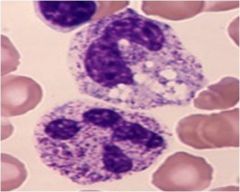
What is wrong with the neutrophils seen here?
|

Toxic granulations. The azurophilic granules are indicative of immaturity. Patient could have a massive infection or another reason to be putting out immature cells
|
|
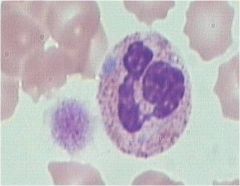
What autosomal dominant congenital abnormality has basophilic inclusions that may resemble Dohle bodies? What other findings are characteristic on blood smear?
|

May-Hegglin anomaly, but also GIANT platelets. Usually benign, sometimes thrombocytopenia
|
|
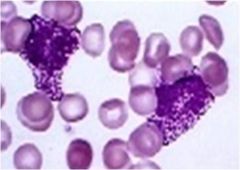
What is a neutrophil anomaly associated with mucopolysaccharidoses, and what are the findings on blood smear?
|

Alder-Reilly anomaly. Blood smear will show many azurophilic granules in granulocytes, lymphocytes and monocytes.
|
|
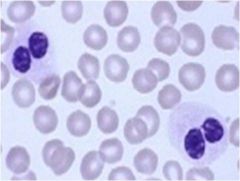
What are the two possible causes of the pince-nez appearance of these polys?
|

Congenital (innocuous)
or acquired (pseudo Pelger-Huet - myelodysplasia) |
|
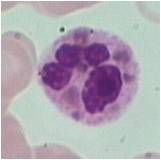
If this cell was on a peripheral smear of a child with oculocutaneous albinism, what else would you expect on history?
|

Frequent infections from Chediak-Higashi syndrome, a defect in fusion/trafficking of vesicles (including melanosomes)
|
|
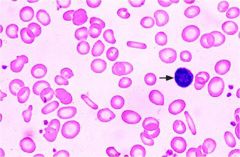
What type of anemia is seen here?
|

Iron deficiency anemia - hypochromatic with increased central pallor and pencil cells
|
|
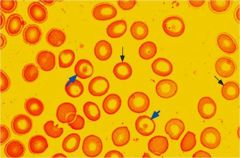
What type of anemia is seen here?
|
Thallassemia - increased central pallor, target cells
|
|
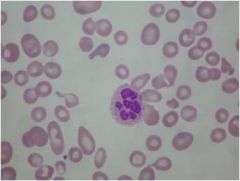
What causes this type of anemia?
|

B12 deficiency - multilobulated PMN, irregular shapes
|
|
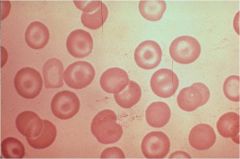
What can cause the appearance of these cells?
|

Thalassemia, Liver disease, severe Iron deficiency, Heme C disease, asplenia
|
|
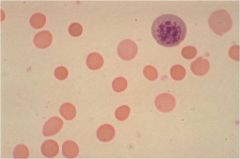
What causes spherocytosis?
|

Hereditary spherocytosis caused by mutations in cytoskeleton proteins
Autoimmune hemolysis |

